Exotic animals
Signs that your bird is sick
In nature, sick and weakened birds die from hunger or become victims of predators. It often happens that the bird’s relatives kill the sick and wounded members of the family. This is called natural selection. As a result, the healthiest individuals survive.
To avoid death, many birds have developed various strategies that make it difficult to recognize signs of a disease. When birds think they are not alone, they try to look healthy. They continue to eat, even if they are terminally ill, often until they fall off the perch. Also, in severe pain, they try not to look like it doesn’t hurt at all. That is why inexperienced owners notice that their bird is sick only at a later stage. Often the birds at this point become so emaciated and weakened that any treatment may be already useless.
A careful observer can determine the bird’s health issues quite early and contact a veterinarian. Here are some signs that can help you understand if it is time to visit the clinic.
Behavior
If your feathered friend has been living with you for a long time, you have studied their behavior well. Any change in behavior is suspicious and should be treated as a sign of a disease. For example, your bird has become less playful (hand budgerigars), no longer sings (canary), sits in a cage if its door is open, snaps, constantly squeezes its head and sleeps unusually much. If the bird suddenly began fighting with other inhabitants of the cage, having been peaceful before, it may also be a sign.

A sick bird, as a rule, is calmer, often apathetic, it shows less interest in the surrounding world. When a shy bird suddenly becomes tame and allows you to be taken in hand, this is an alarming sign — something must be wrong here.
Body position
Sick birds hold their feet tight together during sleep, while healthy ones often sleep with only one foot. If the bird is holding one leg close to the body all day long, or seems to be careful with it, it means that that leg is probably damaged.
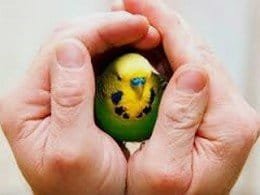
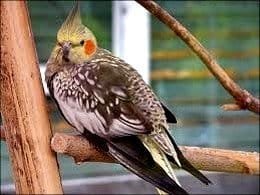
When the bird sits with an arched back and tail curved downwards, we should suspect some changes and pain in the abdominal cavity might be present, which can be a sign of tumors, bowel disease, etc.
Acute respiratory failure can be easily identified by the rapid trembling of the tail feathers in accordance with the rhythm of breathing. In severe dyspnea, the bird opens its beak for easier breathing.
Due to problems with thermoregulation, which usually develop in a sick bird, the bird may feel cold. To reduce the radiation of heat from the surface of the body, the feathers will be more puffy. Eyes become dull, sunken, the bird keeps them half-closed, which is also a sign of impaired health.
Discharge
Urine and feces are excreted simultaneously in birds. In granivorous birds, the feces are thick, mushy to solid consistency. Color depends mainly on the type of feed and can vary from dark green, brown to black. On feces, as a rule, there is a deposit of whitish urine (Figure A).
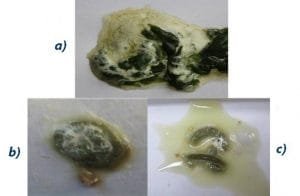
If the dark part of the secreted feces is liquid, this means that the bird has diarrhea (Figure B). When excreting liquid urine, which looks like a pool around the solid part of the feces, you can suspect a kidney disease (Figure C).
In stressful situations, for example, after transportation, from unexpected noise, for a short time, urine can become liquid. This is a safe phenomenon from a health viewpoint.
Plumage
Broken feathers, bald spots on the skin, dull feather surface, poorly growing new feathers on the head, sticky, blanching feather or change in color are all signs of a developing disease.
Transportation of birds to the vet clinic
Normally, veterinarians treat cats and dogs only, with only a few being qualified to professionally treat birds, especially exotic ones. Before you take your pet to the veterinarian, check if they have a qualification necessary to treat birds.
Thorough examination and certain diagnostic procedures (e.g x-ray examination) can only be performed in the clinic.
In most cases, the body temperature of a sick bird decreases. It is especially important during transportation to ensure protection from cold and drafts. Cover the cage with a thick cloth.
If you are transporting a sick bird in the cage where it lives, you should not clean it before visiting the veterinarian, because the treating physician will be able to examine the changes in urine and feces that remain in the cage, as well as pinpoint to the owner how the living conditions of the bird could be improved.
If the bird lives in an open-air cage or large cage that is inconvenient to transport, you can bring it in a small box (with holes for ventilation) or a transport cage. Put a non-slippery material inside the box (for example, kitchen towels, pieces of cloth) so that the bird can hold onto it.
You should also bring your pet’s feces, food samples and labels of the medicine used (if applicable).
Sometimes it is impossible to make a final diagnosis quickly. Then the animal will be placed in our hospital so that the doctor will be able to observe it. Transportation is typically a stressful situation, therefore it is best to wait for some time before examination and treatment so that the bird can recover from shock. It may be necessary to stay in the hospital for several days in order to perform adequate treatment and remain under supervision.
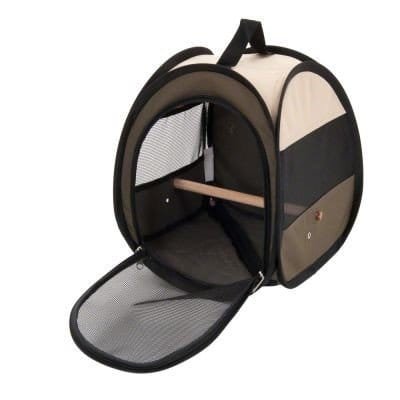
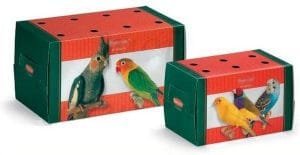
Checklist for visiting veterinarian
It is very important for a veterinarian to get detailed information about the bird from the owner. Please answer the questions below and take this leaflet with you when visiting the vet.
